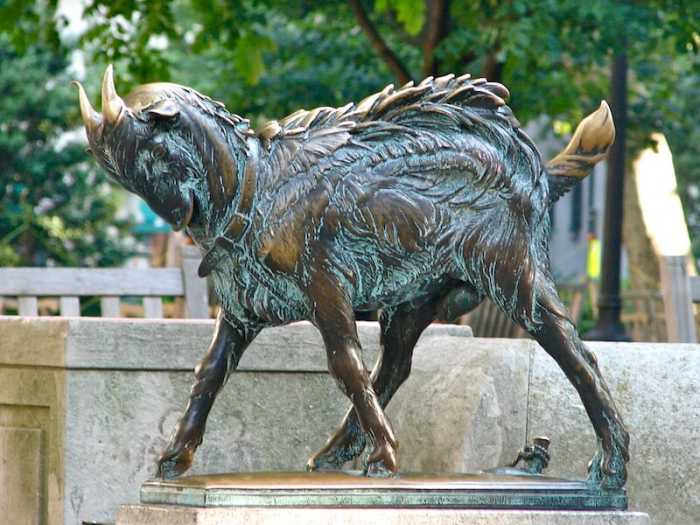The work of Peter Blume spansmost of the major American art movements of the 20th century. Born in 1906, he began painting in the 1920s and continued working until shortly before his death in 1992. During that time he drew inspiration from folk art, surrealism, 15th-century Flemish painting and cubism, among other influences, and associated with abstract expressionists and surrealists without ever fully signing on to any single movement. According to Robert Cozzolino, curator of PAFA’s new exhibition “Peter Blume: Nature and Metamorphosis,” that independent streak is one reason why an artist recognized as one of the major voices of his generation during his lifetime is now largely unknown. “I think the fact that we don’t think of him as a household name has a lot to do with the way that he conducted his career,” Cozzolino says during a tour of the exhibition. “He remained an individual and didn’t follow trends or shift his style to be associated with particular groups. He tried to remain apart from that and follow his gut. The way history has been written has often been unfair to those artists who deliberately stayed out of the mainstream, did their own thing and bucked trends.” Throughout his lengthy career, Blume swam upstream by remaining dedicated to figurative art as the art world was rushing headlong into greater abstraction. But that’s not to imply that his work held fast to a dull, prosaic realism. His bold colors, hyper-realistic figures and dreamlike juxtaposition of symbolic imagery borrowed heavily from cubism and surrealism while staying true to his own individual voice. As Cozzolino says, “Blume thought that trying to convey subjective experience and emotional reactions was as valid a form of realism as painting things in a photographic way.” What you’ll see
The PAFA exhibition is the first major retrospective of Blume’s work since 1976 and spans the artist’s entire career.
Organized chronologically, “Nature and Metamorphosis” begins with folk-inspired paintings from the 1920s before moving on to the scandalous “South of Scranton,” which thrust Blume into the center of a modern art debate in the early 1920s. Also included is the equally controversial “The Eternal City,” which featured Mussolini’s head as a jack-in-the-box against a backdrop of Roman ruins; the WPA-aligned allegory “The Rock”; and the vivid “Tasso’s Oak,” not seen in public since 1961. Peter Blume: Nature and Metamorphosis
Through April 5
Pennsylvania Academy of the Fine Arts
118-128 N. Broad St.
$12-$15, 215-972-7600
Peter Blume can’t be categorized

Art © The Educational Alliance, Inc., Estate of Peter Blume / Licensed by VAGA, New York, NY





























